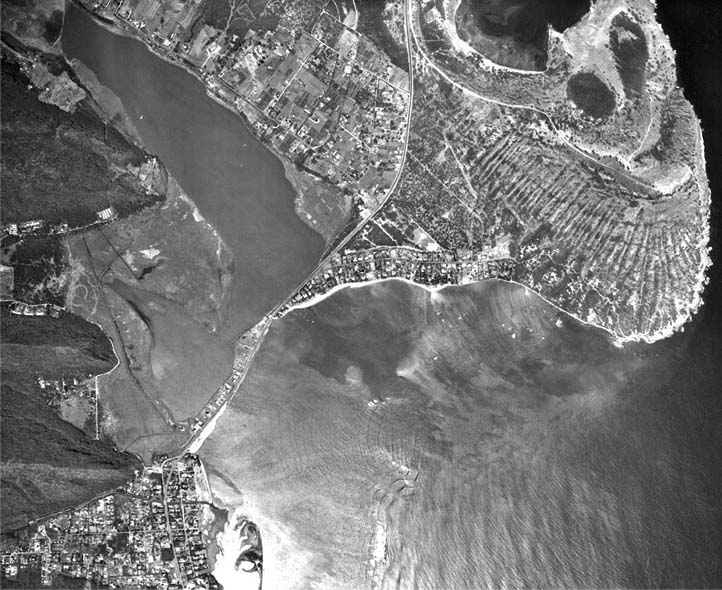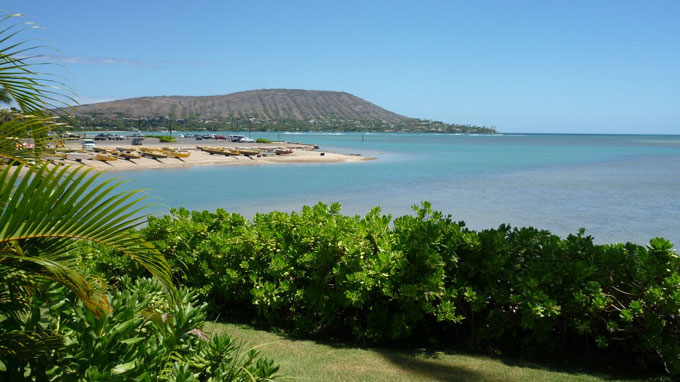James Hay Wodehouse was born on April 23, 1824. He was the second son of Charles Nourse Wodehouse (Archdeacon of Norwich) and Lady Dulcibella Jane Hay. He married Annette Fanny Massey, daughter of William Massey, on January 19, 1861.
Wodehouse was private secretary to George Grey (Governor of New Zealand) in 1851; on November 5, 1860, it was announced, “The Queen has been graciously pleased to appoint Major James Hay Wodehouse to be her Majesty’s consul in the Society or Leeward Islands in the Pacific Ocean.” (London Daily News, November 24, 1860)
On June 21, 1866, “The Queen has been graciously pleased to appoint James Hay Wodehouse, Esq … to be Her Majesty’s Commissioner and Consul-General in the Sandwich Islands.” (British Bulletins, 1866)
A retired British Army Major, Wodehouse took up his duties and thereafter worked diligently to protect British interests during a long career. (Andrade) “Minister Wodehouse represented the British Governmental the Hawaiian court for over twenty-five years with great credit.” (San Francisco Call, August 11, 1895)
These were tumultuous times in the Islands. Through several monarchs, the issue of independence / annexation and takeover by others were part of the ongoing discussions.
“About the end of 1867, Queen Emma, in a conversation with British Commissioner JH Wodehouse, assured him ‘that with a few exceptions, all the natives were opposed to annexation.’” (Daws)
“Many times, Kamehameha V stated his firm resolve to maintain the independence of his kingdom, and there is no good reason to doubt the sincerity of these declarations. British Commissioner Wodehouse reported a conversation with the king in which the latter expressed ‘his determination to resist any project for the annexation of his Islands to the United States.’” (Daws)
On January 17, 1893, Queen Lili`uokalani yielded her authority to the US government. In 1895, an abortive attempt by Hawaiian royalists to restore Queen Liliʻuokalani to power resulted in the Queen’s arrest.
Convicted of having knowledge of a royalist plot, “at two o’clock on the afternoon of the 27th of February I was again called into court, and sentence passed upon me … a fine of $5,000, and imprisonment at hard labor for five years.” (Queen Liliʻuokalani) The sentence was commuted to imprisonment in an upstairs apartment in ʻIolani Palace.
“(Wodehouse) was strongly opposed to the revolution, and made himself obnoxious to the Provisional Government, who came to regard the British legation as the chief center of royalist intrigue.” (San Francisco Call, August 11, 1895)
The British Government, having recognized the Hawaiian Republic, recalled Wodehouse and appointed Mr Hawes British commissioner and consul general. Major Wodehouse, on his departure, neglected to pay an official farewell to the Dole Government, and proposed to take leave of the ex-Queen, imprisoned in the palace. (Appletons’, 1895)
“Previous to Mr Wodehouse’s departure from Honolulu he requested a parting interview with ex-Queen Liliʻuokalani, but the request received a positive refusal. The reason assigned was that Mr Wodehouse still held an official character of which he could not divest himself, so as to render his visit to the former Queen one merely of friendship.” (San Francisco Call, August 11, 1895)
“(A)n open letter of Mrs Wodehouse to the ex-Queen had been returned to the writer because it was addressed to ‘Her Majesty.’ The denial of intercourse in the case of the British Minister is an exception to a very considerable degree of the freedom usually allowed to Mrs Dominis in seeing her friends. (San Francisco Call, August 11, 1895)
Wodehouse had other reasons for desiring to be relieved of his duties at this time. He had been in Hawaiʻi for 15-years without any leave, was not in good health and wished to return to England to spend his last years. The British government accordingly granted him leave to return to England. (Andrade) Wodehouse died in England on July 13, 1911.
Here’s a little Wodehouse side note: A malfunctioning chronometer put the British sailing ship Dunnottar Castle off course and onto the reef at Kure atoll. Seven of the crew members, including its Chief Officer, took one of the surviving boats and sailed, for 52 days, to Kauaʻi. Upon being informed of the tragedy, the British Commissioner in Honolulu organized a rescue mission. (HawaiianAtolls)
Wodehouse decided to send a ship for the remaining crew. Suspecting that the British might use the occasion to annex the island, the Hawaiian Government shared the expedition expenses and instructed Commissioner James Boyd to take formal possession of Kure. On September 20, 1886 Boyd took possession of the island, then-called Mokupāpapa, for the Hawaiian government. (PMNM)
The rescue mission came back to Honolulu with the same amount of people it had sailed out with. No survivors were found on the atoll, except for two fox terriers and a retriever. All of the survivors had been picked up earlier by a passing vessel and were on route to Chile. (HawaiianAtolls)
Here’s another side note, relating to one of Wodehouse’s sons, ‘Hay.’ On July 30, 1889, Robert William Wilcox led a rebellion to restore the rights of the monarchy, two years after the Bayonet Constitution of 1887 left King Kalākaua a mere figurehead.
“The day was won, they say, by a base ball (catcher,) who threw dynamite bombs into the bungalow that formed the headquarters of the insurgents and brought them to terms quicker than rifle or cannon shot.”
“Bombs were made, but it was found that there were no guns to fire them. It was a long throw, and in their dilemma the King’s guards secured the services of Haywood (Wodehouse,) (catcher) of the Honolulu Base Ball Club.”
“(Wodehouse) took up his position in the Coney Island building, just across a narrow lane, and overlooking the bungalow. No attack was expected from that quarter, and there was nothing to disturb the bomb thrower. (Wodehouse) stood for a moment with a bomb in his hand as though he were in the box waiting for a batsman. He had to throw over a house to reach the bungalow, which he could not see.”
“The first bomb went sailing over the wall, made a down curve and struck the side of the bungalow about a foot from the roof … The bomb had reached them and hurt a number of the insurgents. (Wodehouse) coolly picked out another bomb. Then he took a step back, made a half turn and sent it whizzing. It landed on the roof … He threw one more bomb and Wilcox came out and surrendered.” (The Sporting Life, October 16, 1889)
Here’s one more … The unveiling of the Captain Cook monument in Kealakekua Bay took place on November 14, 1874. Credit for it is given to Princess Likelike (sister of King Kalākaua and Queen Liliʻuokalani, and mother of Princess Kaʻiulani (who sold the land for $1 on January 26, 1877 to be held in trust for the monument in memory of Captain Cook)) and British Commissioner Wodehouse.
“The erection of a suitable and durable monument to the memory of Captain James Cook has been often proposed and more than once attempted, but has now been happily accomplished under the direction of Mr Wodehouse, the British Commissioner, with the cooperation of Captain Cator of HMS ship Scout, who kindly conveyed the architect and his men and materials to the spot in Kealakekua Bay, where the circumnavigator fell, and where now, nearly a century later, a fitting monument is at last dedicated to his memory.”
“It is a plain obelisk, standing on a square base, the whole being twenty-seven feet in height, and constructed throughout of a concrete composed of carefully screened pebbles and cement, similar to tie material of which the fine public buildings in this city are built. It stands on an artificially leveled platform of lava only a few feet distant from and above the highwater mark, and fifteen or twenty yards from the shore or lava slab on which the great seaman stood when struck down.”
“The site is thus the most suitable that could have been chosen, and is the gift of Princess Likelike, wife of Hon. AS Cleghorn. The expense of the erection is partly borne by subscribers in England…” (Hawaiian Gazette, November 25, 1874)













































